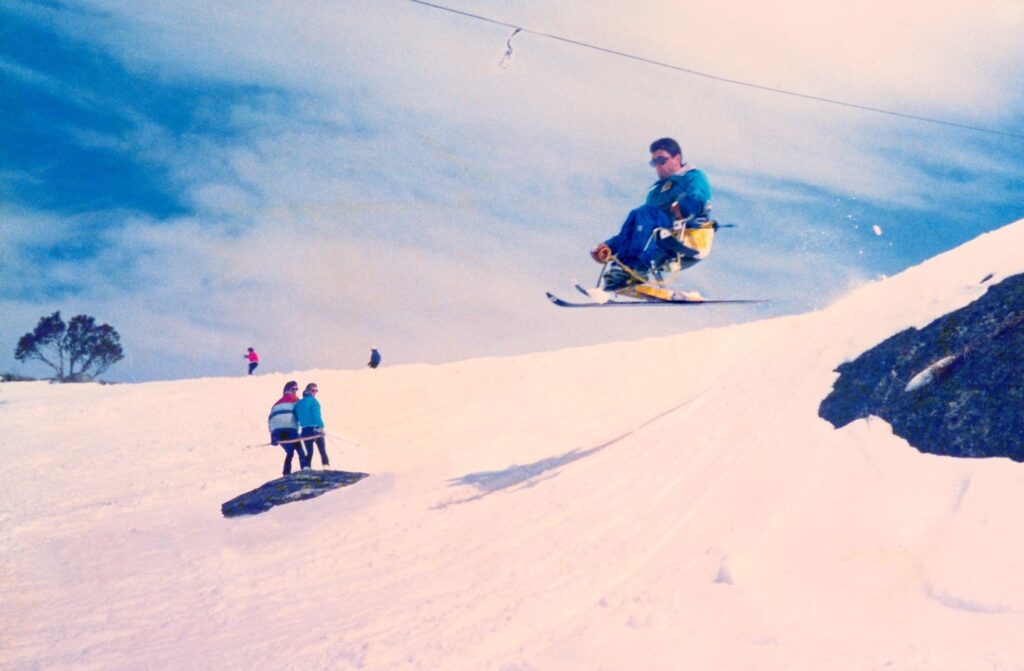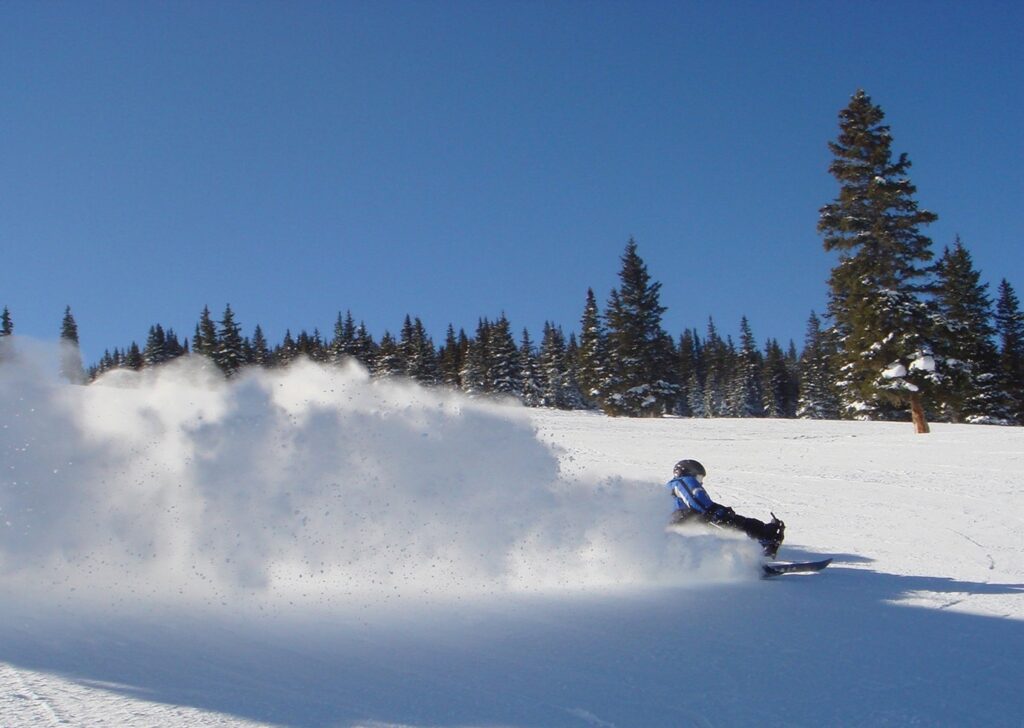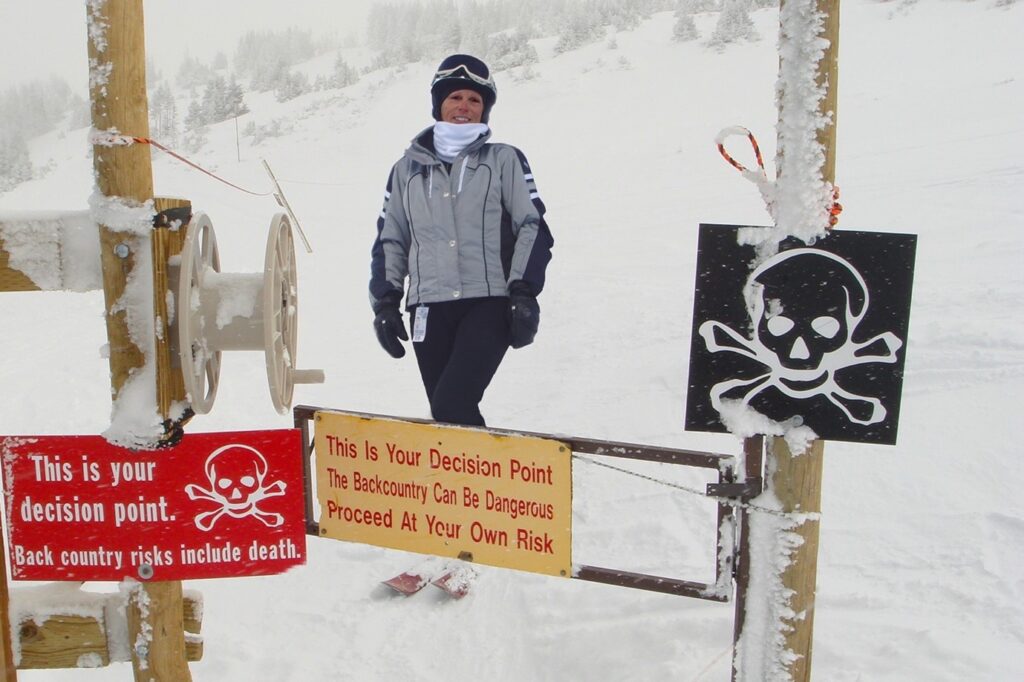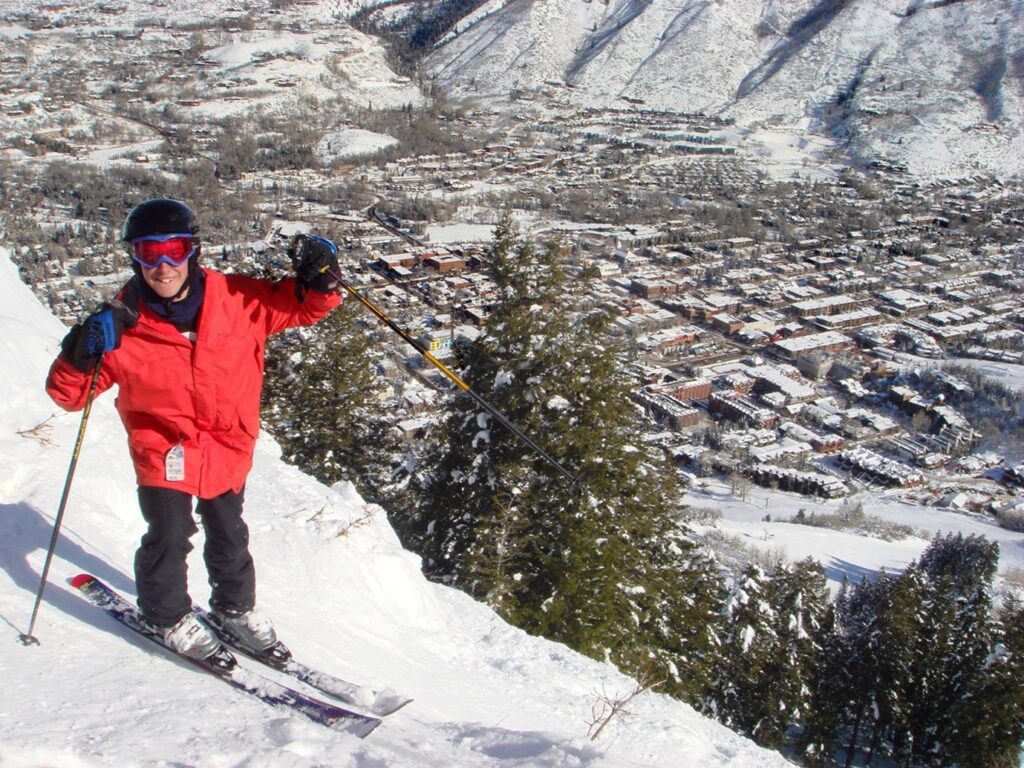I just wanted to be on the slopes with my friends.

‘Experts’ said this photo was a fake. It was impossible to do this.
Back in 1985, disabled people who wanted to accompany their friends on the ski slopes were restricted to equipment that resembled simple sleds. They used handheld spikes to steer and stop. Not good! Accidents and injuries were common.
Around that time, my paraplegic mate David McPherson’s dad (George) had come up with a revolutionary concept. A fibreglass bucket mounted to a normal ski, connected by the huge spring from a paddock plough. Heavy and, at times like riding a bucking bronco, it nevertheless changed our world. Lots of my disabled athlete mates learned to carve the slopes at Falls Creek and Hotham with this beast. We were the first in world with this technology.
George said to me … “I reckon it could be lighter and more controllable if I built it with a motorcycle shock absorber”.
That was all I needed.
Being handy in my home workshop, and with a history of building revolutionary, fast and lightweight basketball and track chairs, I set to work designing something that would be a third of the weight. Welded from Chrome Moly and based around that Motor Cycle shock.
Version one is pictured above flying over a jump at Perisher in 1988. It was unbelievably manoeuvrable and very quick. It even could fly over jumps (as you can see) but couldn’t land gracefully (as fortunately you can’t see).
This photo was published in a worldwide disability sport magazine and there were plenty of specialist disability advisers who commented that this was simply not possible. The photo must have been faked.
I went on to improve the suspension and made a lot of these for friends. One of my chairs (not me) achieved gold at the Winter Paralympics in the skilful hands of Michael Norton (sadly now deceased). My is still used for disabled monoskis around the world.
Unchanged … 35 years later.
I never went far competing in winter sport, preferring to ski with family and friends just for fun. My days of serious competition were (mostly) over. Perhaps Targa Tasmania in years to come showed that I was still serious.

Our family became obsessed about skiing in the USA. We managed to ski (with several other families) every year for probably 20 years, mostly at Aspen. But we also skied Vail, Telluride, Whistler, Jackson Hole, Park City and Steamboat. And we skied New Zealand, France, Italy, and several trips to Hakuba and Niseko in Japan.
It was on one of those trips to Aspen that my son Nick tried to get me out of my comfort zone. Dad, he said, “I think you can do Double Black”. Not Green. Not Blue. Not even Black. This was Double Black?
Very steep.

Nick, Me, Ally, and Aileen. Great powder makes a fun family holiday. Cute name for a slope!
Of course, under Nick’s watchful eye, I managed to do what I thought (until then) was beyond my level of capability (and courage). Double Black was relatively easy … provided the snow was good. When it was icy, I was more likely to fall and worse still, slide uncontrollably towards whatever cliff edge lay in front. Several times Nick raced to my rescue and stopped a possible nasty drop.
Having achieved that goal, the following year, Nick said, “Dad, I think you are ready to do the Double Back Extreme slope”.
“Trainor Ridge” was just such a run. My wife, daughter and son had all skied this run the previous year, much to my subsequent horror. “Dad it was easy” said my daughter Ally.

Aileen unfazed by the warnings at the Trainor entrance.
No way. This slope has a gate to stop skiers inadvertently entering a disaster. The gate is painted with a giant skull and cross bones symbols. Danger, enter at your own risk! The slopes are so steep that you can’t see them when you stand right next to them. They drop so far and fast that all you can see is the tops of the pine trees just a few meters in front of you.
But Nick has a way of making me feel more competent than I really am. I reluctantly followed him down the one-way entry path. No going back.
OMG … what have I done? Do I call for the ski patrol to rescue me from this stupid self-inflicted situation? “What were you thinking” I could hear them say. “How could you not see the warnings on the gate”?
Clearly, that humiliation and the probable loss of confidence from my son was too much. I decided to do it.
The snow was good, so I knew if it was ever possible, today was the day. I gently moved towards the edge with my ski half in the air. I still couldn’t see anything below me. I could see Aspen Village in the distance. Nick says, just drop sideways and stop early.

Nick stands at the edge of the sheer drop of the Double Black Extreme slope. “Easy” he says.
I did what he said. Woosh. I dropped 10 meters in height in just two seconds. I am parked sideways in the soft snow. My right arm outrigger is up very high to try to keep my balance into the mountain. My left is just waving in the breeze. I can see the slope now. There is a long way to go, and it is super steep. With lots of scary big trees. Don’t look Chris.
A bit more courage and a shove into the snow and I am off on the next big drop and deep stop. And again, and again. Until I finally hit the connecting run below.
I made it.
I had done something that I didn’t think was possible. And best of all, I had done it with my son … together. Another adventure that neither of us will ever forget. That is the stuff that relationships are built from.
We believe that families are built on doing things together. Doesn’t have to be skiing in Aspen. Can be just walking, riding, exploring, camping, hiking, or picnicking. No substitute for lots of great family time together.
Our way was skiing.
Chris Alp
